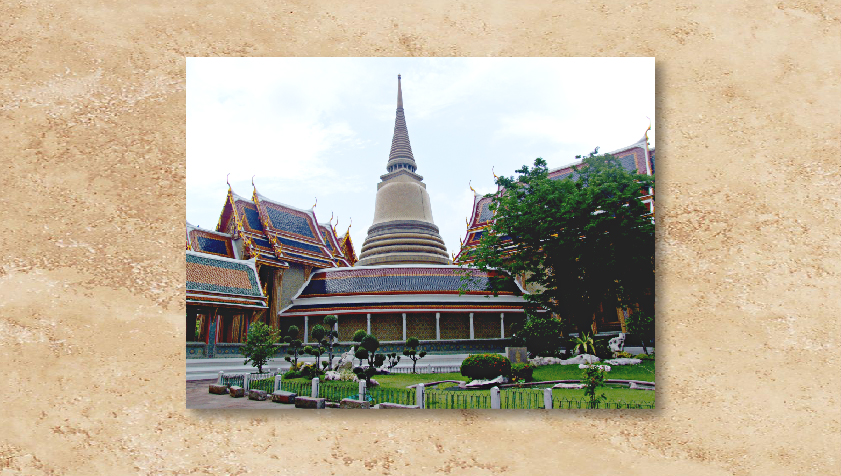
วิวัฒนาการระเบียงคดหลังพุทธศตวรรษที่ 19 ในลุ่มแม่น้ำเจ้าพระยา
Evolution of Buddhist Cloisters After the 19th Century in the Chao Phraya River Basin
โดย ดร. รุ่งโรจน์ ภิรมย์อนุกูล / By Dr. Rungroj Bhiramyaanukula
Damrong Journal, Vol 16, No.2, 2017
บทคัดย่อ:
ระเบียงคด คืออาคารที่วงล้อมรอบสิ่งก่อสร้างที่เป็นประธานที่มีจุดกำเนิดในวัฒนธรรมทะเลสาบเขมร และส่งผลให้กับศาสนสถานในลุ่มแม่น้ำพระยาตั้งแต่สมัยอยุธยาตอนต้น
แต่อย่างไรก็ตามระเบียงคดของศาสนสถานลุ่มแม่น้ำเจ้าพระยาจะมีความแตกต่างกับระเบียงคดในวัฒนธรรมทะเลสาบเขมรคือ
1. ในวัฒนธรรมทะเลสาบเขมรถ้าเป็นศาสนสถานที่สำคัญจะมีการวงระเบียงคดหลายชั้น แต่ในวัฒนธรรมเล่มแม่น้ำเจ้าพระยาช่วงสมัยอยุธยาศาสนถสานที่เข้าข้ายพระมหาธาตุหลักพระนครเท่านั้นที่จะมีระเบียงคดและมีเพียงชั้นเดียว
2. ในวัฒนธรรมทะเลสาบเขมรผนังระเบียงคดจะแกะสลักภาพนูนต่ำซึ่งในช่วงพุทธศตวรรตที่ 18 จะนิยมแกะเป็นภาพพระพุทธรูป ส่วนของลุ่มแม่น้ำเจ้าพระยาจะประดับประติมากรรมพระพุทธรูปลอยตัว
เนื่องจากระเบียงคดในสมัยอยุธยาจะปรากฏในศาสนสถานที่เข้าข่ายเป็นพระมหาธาตุหลักพระนคร ดังนั้นวิวัฒนาการของระเบียงคดใช่วงสมัยนี้จึงไม่พัฒนามากเท่ากับในสมัยรัตนโกสินทร์และพัฒนาเป็นถึงจุดสุดยอดที่ระเบียงคดชั้นบนของวัดพระปฐมเจดีย์
ABSTRACT:
The cloister is the continuous structural enclosure of a presidential building which has its origins in Khmer culture. Its influence has been observed in the monasteries in the Phraya River basin from the early Ayutthaya period onwards. However, the cloisters of the monasteries in the Chao Phraya River Valley are different from those in Khmer culture as listed:
1. In Khmer culture, the cloisters in notable temples usually consist of multiple layers. On the contrary, in the culture of Chao Phraya River Valley during the Ayutthaya period, the cloisters are found as a single enclosure of the principal monasteries of the city (Phra Nakorn).
2. In Khmer culture, the inside walls of the cloisters are decorated with bas relief carvings, the most popular themes during the 18th Buddhist century were the Buddha images, whereas the cloisters in the Chao Phraya River basin are adorned with Buddhist statues.
Due to the fact that the cloisters in the Ayutthaya period are found in the monasteries considered as the main temples of Phra Nakhon, the evolution of the cloisters in this period is not as developed as the ones in the Rattanakosin period where the development has reached its highest point as found on the top floor of the Phra Pathom Chedi Temple.











